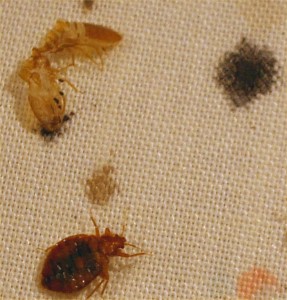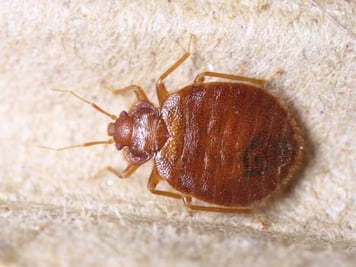Expert Bed Bug Exterminator: DC Services and Heat Treatment
Expert Bed Bug Exterminator: DC Services and Heat Treatment
Blog Article
Checking Out the Science Behind Bed Insect Heat Treatments as a Lasting Pest Monitoring Method
In the realm of parasite administration, the pursuit for efficient and lasting services continues to be a continuous pursuit. One such technique that has obtained traction in the last few years is the use of warm treatments to battle bed bug problems. By using the science behind thermal death factors for these consistent pests, warm therapies offer an encouraging alternative to conventional chemical-based strategies. The complexities of just how heat successfully removes bed bugs and the wider effects for lasting insect administration techniques make this a topic worth exploring even more.
Bed Pest Warm Therapy Refine

Thermal Death Factor for Bed Insects
Revealing bed insects to raised temperature levels beyond their thermal tolerance range is essential for attaining efficient eradication in warmth treatment procedures. The thermal fatality point for bed insects describes the temperature at which these bugs can not survive. Research study shows that bed bugs begin to die when subjected to temperatures over 113 ° F(45 ° C) for a continual period. As the temperature level increases, so does the mortality price of bed bugs. At around 118 ° F(48 ° C ), bed bugs start to pass away quickly, with a mortality price of virtually 99% within minutes of direct exposure. This demonstrates the sensitivity of bed pests to heats and highlights the performance of warmth treatments in getting rid of infestations. By reaching and preserving temperature levels above the thermal fatality factor for bed bugs, insect administration specialists can guarantee detailed removal of bed bug populaces, consisting of hard-to-reach locations where chemical treatments may be less reliable. Understanding the thermal death factor for bed pests is vital for implementing successful heat therapy methods and attaining lasting insect administration outcomes.
Benefits of Warm Treatments
Having developed the essential thermal fatality point for bed pests, it is imperative to currently discover the considerable advantages that warmth treatments offer in effectively eradicating these resistant insects. When compared to traditional chemical approaches, warm therapies present several essential benefits. Among the primary benefits is that heat can pass through deep into cracks and gaps where bed pests hide, ensuring that even one of the most hard-to-reach areas are warmed to deadly temperature levels. This extensive method not just kills real-time bugs yet also targets bed insect eggs, preventing future invasions.
Additionally, warmth therapies are ecologically pleasant and safe, making them a lasting pest management technique. Unlike chemical pesticides, warm therapies do not leave harmful residues that can position dangers to human health and wellness or the setting. This facet is especially crucial in delicate settings such as hospitals, schools, and houses where chemical use may not be desirable.
Additionally, heat treatments have a high success rate in eliminating bed bug problems in a solitary therapy, reducing the need for multiple gos to and reducing disruption to occupants. This efficiency not just conserves money and time yet additionally supplies assurance to those taking care of bed insect problems.
Effectiveness of Warmth Therapy

Heat therapies have actually the included benefit of eliminating bed pest eggs, which are frequently resistant to traditional chemical therapies. Overall, the efficiency of warmth therapies in eliminating bed pest problems makes them a reputable and lasting bug management approach.
Lasting Bug Monitoring Advantages
Applying sustainable pest administration practices supplies long-lasting advantages for both the environment and public health. By using methods such as warmth therapies for pest control, we can reduce the reliance on damaging chemical pesticides that can have unfavorable effects on environments and human wellness - DC exterminator. Sustainable pest monitoring approaches assist in protecting biodiversity by targeting details pests without damaging non-target microorganisms, consequently maintaining a balanced community
Moreover, lasting parasite management techniques add to the total wellness and well-being of the general public. By lessening exposure to hazardous chemicals used in typical parasite control approaches, warm treatments offer a more secure alternative for parasite administration in residential, industrial, and public areas. This reduction in chemical usage likewise helps in preventing pesticide deposits from infecting soil, water, and air, guarding environmental quality.
Verdict
Finally, bed insect warmth therapies have actually been shown to be a lasting and effective bug management technique. The thermal death factor for bed bugs makes them at risk to warmth therapies, which have countless benefits over standard chemical therapies. The effectiveness of warmth therapies in getting rid of bed bug problems while minimizing ecological effect highlights the possibility of this technique as a sustainable option for bug control.
The bed pest warmth treatment process includes increasing the temperature within infested locations to exterminator near me a degree that successfully eliminates bed bugs and their eggs. By reaching and keeping temperature levels over the thermal fatality point for bed bugs, bug management specialists can make certain extensive removal of bed pest populaces, consisting of hard-to-reach locations where chemical therapies might be less reliable. One of the primary advantages is that heat can pass through deep right into cracks and gaps where bed bugs hide, guaranteeing that also the most hard-to-reach locations are heated up to dangerous temperature levels. Unlike chemical therapies that might leave behind immune populaces, warm treatments use a ecologically friendly and non-toxic service that can penetrate deep into furniture, wall surfaces, and various other hard-to-reach locations where bed bugs conceal.
The thermal fatality factor for bed bugs makes them at risk to warmth treatments, which have many benefits over traditional chemical treatments.
Report this page